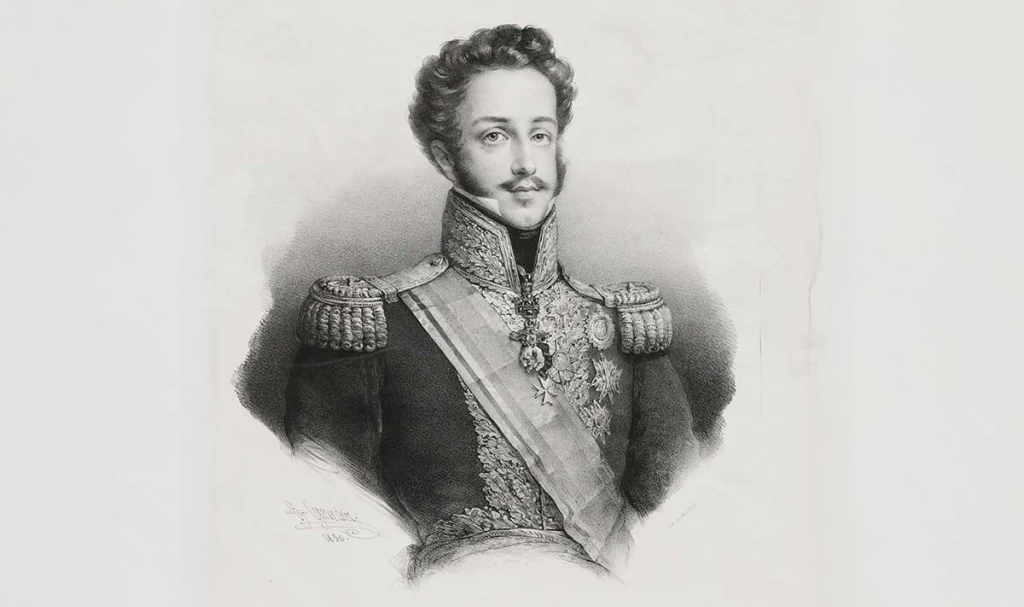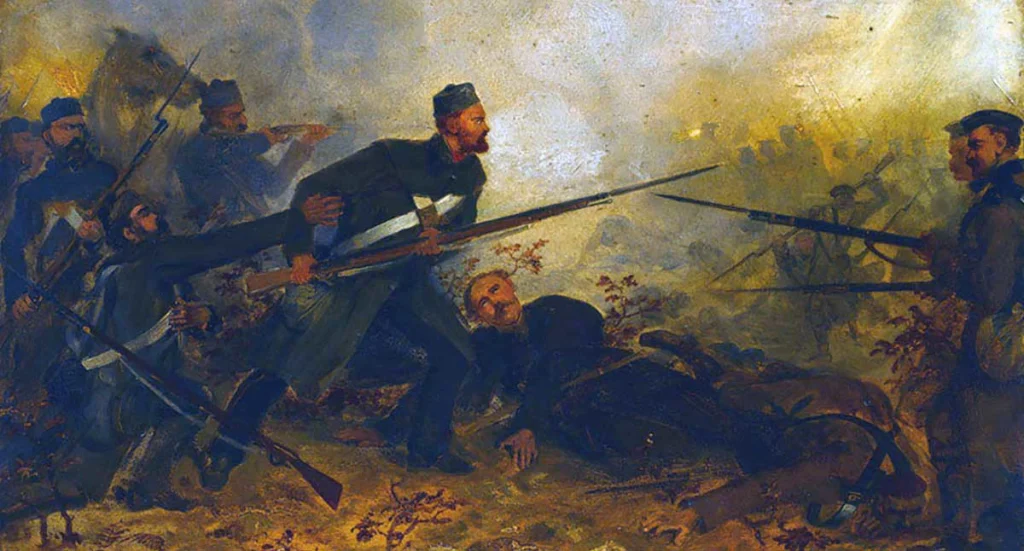The Phoney War, spanning from September 1939 to May 1940, marks a peculiar chapter in the early stages of World War II. Following Germany’s invasion of Poland, Britain and France declared war, yet the Western Front remained eerily quiet, with minimal military engagement. Dubbed the “Phoney War” in Britain, “Drôle de guerre” in France, and “Sitzkrieg” in Germany, this period of inaction contrasted sharply with the brutal fighting in Poland and later blitzkrieg campaigns.
Background and Origins of the Phoney War
The Phoney War began after Germany’s invasion of Poland on September 1, 1939, which prompted Britain and France to declare war two days later. The term “Phoney War,” reportedly coined by U.S. Senator William Borah, captured the lack of significant land operations on the Western Front. This period was characterized by a stark contrast: while Poland faced the full force of Germany’s blitzkrieg tactics, Western Europe saw little action, leading to terms like “Twilight War” (Winston Churchill) and “Bore War” in the British press.
Several factors contributed to this stasis. Britain and France, scarred by the devastation of World War I, adopted a defensive posture, relying heavily on the French Maginot Line—a series of fortifications along the German border. The Allies lacked the political will and military readiness to launch an offensive, partly due to the policy of appeasement that had dominated the 1930s. Meanwhile, Germany, focused on consolidating its gains in Poland and preparing for future campaigns, also avoided major engagements in the West. The result was a tense waiting game, with both sides bracing for an inevitable escalation.
Allied Strategies and Preparations
During the Phoney War, Britain and France focused on bolstering their defenses and economies. The British Expeditionary Force (BEF), numbering 390,000 by early 1940, deployed to France to support the French army. The Allies implemented a naval blockade to cripple Germany’s economy, targeting its imports and sinking several U-boats, though German submarines continued to pose a threat.
In Britain, preparations for war intensified. Blackout regulations, air raid drills, and gas mask distributions became routine, reflecting fears of German air attacks that never materialized during this period. The Air Raid Wardens’ Service recruited 750,000 volunteers, and the RAF improved its radar network, later known as the Dowding System. However, coordination and logistics issues exposed weaknesses in Allied preparedness, foreshadowing challenges during the German invasion of 1940.
The Allies also explored offensive plans, such as opening a front in the Balkans or seizing Norwegian ports to disrupt Germany’s iron ore supply. However, these plans were poorly coordinated and often abandoned, as seen in the delayed response to the Soviet-Finnish Winter War. The French army, haunted by World War I’s trench warfare, remained entrenched along the Maginot Line, engaging only in minor skirmishes.
German Activities and Preparations
Germany, while avoiding major land operations in the West, was far from idle. The Wehrmacht concentrated on occupying Poland, where the blitzkrieg devastated defenses and civilian populations. German factories worked tirelessly, producing 2,500 tanks and 1,200 aircraft by early 1940, outpacing Allied production in some areas.
At sea, Germany waged a ruthless campaign. U-boats sank over 220 Allied ships from September to December 1939, including the British passenger liner SS Athenia on September 3, killing 112 civilians. The sinking of HMS Royal Oak at Scapa Flow in October 1939 exposed British naval vulnerabilities. However, the Allies scored a victory with the capture of a German Enigma machine from U-33 in February 1940, aiding codebreaking efforts.
In the air, the Luftwaffe conducted raids on British warships, while reconnaissance flights and minor bombing runs marked the tentative start of aerial warfare. Germany’s cautious approach in the West allowed it to build resources for the invasions of Denmark, Norway, and Western Europe in spring 1940.
Key Events During the Phoney War
Though the Western Front was quiet, several notable events punctuated the Phoney War:
- Saar Offensive (September 1939): France launched a limited incursion into Germany’s Saar region to support Poland but withdrew within days due to German reinforcements and lack of resolve.
- Naval Engagements: The Battle of the River Plate in December 1939 saw British warships corner the German pocket battleship Admiral Graf Spee off Uruguay, forcing its scuttling.
- Winter War (November 1939–March 1940): The Soviet invasion of Finland prompted Allied debates about intervention, but plans to aid Finland were overtaken by the Finnish-Soviet peace agreement in March 1940.
- Christmas 1939: On the Western Front, soldiers celebrated with makeshift decorations and gift exchanges, reflecting the surreal calm. British and French troops shared drinks, while German soldiers gathered around Christmas trees in bunkers.
- Enigma Breakthrough (February 1940): The capture of German codebooks from U-33 gave the Allies a critical intelligence advantage.
These events, while significant, underscored the limited scope of military action, reinforcing the “phoney” nature of the period.
Life During the Phoney War
For civilians and soldiers, the Phoney War was a time of anxiety, boredom, and anticipation. In Britain, blackout restrictions caused pedestrian accidents, leading to relaxed lighting rules by January 1940. Evacuation of children from cities created emotional strain, and rationing began to affect daily life.
Soldiers on the Western Front faced monotony. British troops organized recreational activities like hunting, while RAF pilots conducted reconnaissance over the Siegfried Line, sometimes waving at German soldiers below. A notable incident occurred in April 1940 when a crashed German Heinkel bomber’s crew was buried with RAF honors in England, highlighting the period’s strange civility.
In Germany, Nazi propaganda intensified, and the occupation of Poland brought brutal repression. The German economy struggled under the Allied blockade, facing material shortages and infrastructure issues, though slave labor later alleviated some workforce gaps.
Why the Phoney War Happened
The Phoney War resulted from a combination of strategic, political, and psychological factors. Britain and France’s defensive mindset, rooted in World War I’s trauma, prioritized fortifications over offensive action. The policy of appeasement, exemplified by Neville Chamberlain’s reluctance to provoke Germany, further delayed decisive action.
Germany, meanwhile, needed time to regroup after Poland and prepare for its Western offensive. Hitler’s caution in engaging Britain and France directly, coupled with his focus on Scandinavian resources, delayed major operations. Both sides also adhered to an unspoken restraint in aerial warfare, avoiding civilian bombing to prevent reprisals.
Political instability compounded the inaction. In Britain, Chamberlain’s leadership weakened, paving the way for Churchill’s rise in May 1940. In France, Prime Minister Édouard Daladier’s resignation in March 1940 reflected public frustration with the lackluster war effort.
The End of the Phoney War
The Phoney War ended abruptly in April 1940 with Germany’s invasion of Denmark and Norway, preempting Allied plans to control Scandinavian resources. The Allied response, including landings in Norway, was outmaneuvered, leading to a withdrawal by June.
On May 10, 1940, Germany launched its blitzkrieg through the Netherlands, Belgium, Luxembourg, and France, executing Operation Case Yellow. The rapid advance overwhelmed Allied forces, exposing their unpreparedness. By June, France fell, and the Dunkirk evacuation (May 26–June 4, 1940) saved over 338,000 Allied troops but marked a humiliating retreat. Winston Churchill’s appointment as British Prime Minister on May 10 signaled a shift to a more aggressive war strategy, ending the era of hesitation.
Legacy and Significance
The Phoney War had profound psychological and strategic impacts. For the Allies, it exposed deficiencies in coordination, morale, and military readiness, contributing to the rapid fall of France in 1940. In Britain, the period’s frustrations led to Chamberlain’s replacement by Churchill, whose leadership galvanized the war effort.
For Germany, the Phoney War provided critical time to amass resources and refine blitzkrieg tactics, enabling devastating victories in 1940. The period also highlighted the effectiveness of Allied naval blockades and intelligence breakthroughs, such as the Enigma capture, which later proved vital.
The Phoney War remains a lesson in the dangers of complacency and indecision in the face of aggression. It was a deceptive lull, masking the gathering storm that would engulf Europe in total war.
Conclusion
The Phoney War of 1939–1940 was a surreal interlude in World War II, defined by inaction on the Western Front while Poland suffered and both sides prepared for escalation. Driven by defensive strategies, political hesitancy, and mutual caution, it delayed the inevitable clash between the Allies and Germany. Though marked by minor skirmishes and naval engagements, its significance lies in the missed opportunities and exposed weaknesses that shaped the catastrophic events of 1940. The Phoney War was indeed the calm before the storm, a fleeting moment of uneasy peace before the full fury of war descended.










































